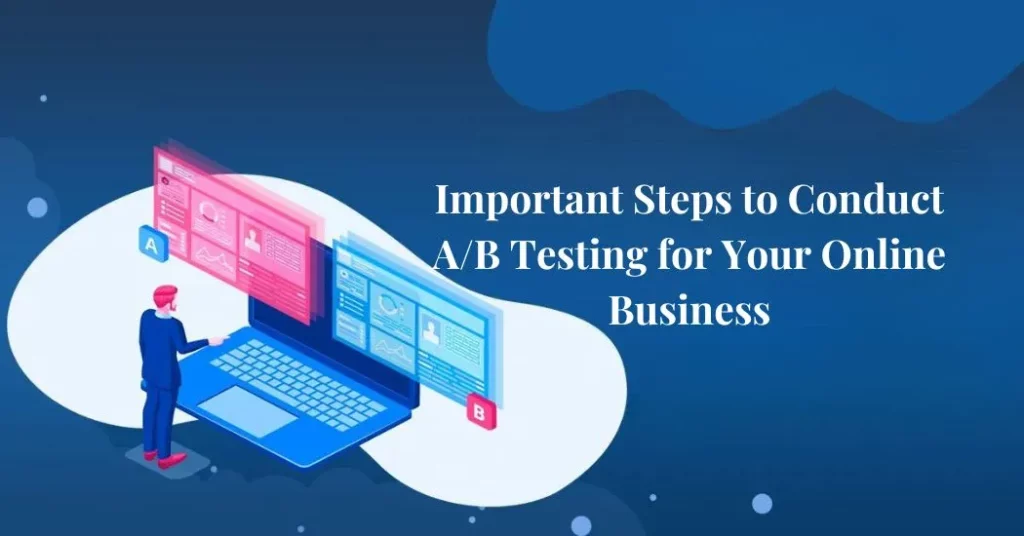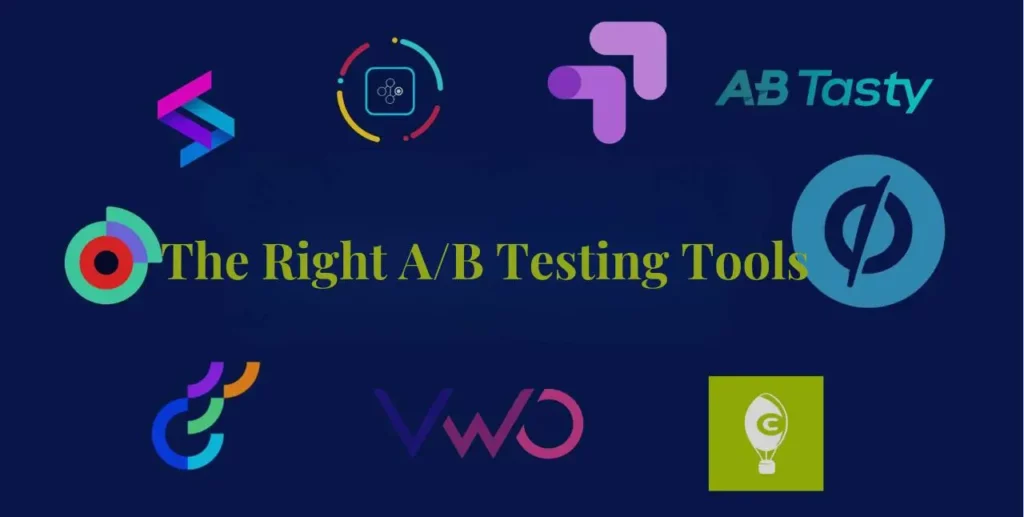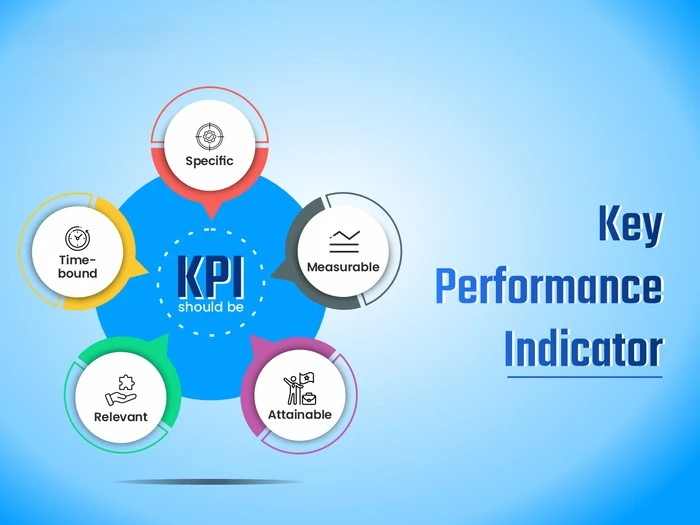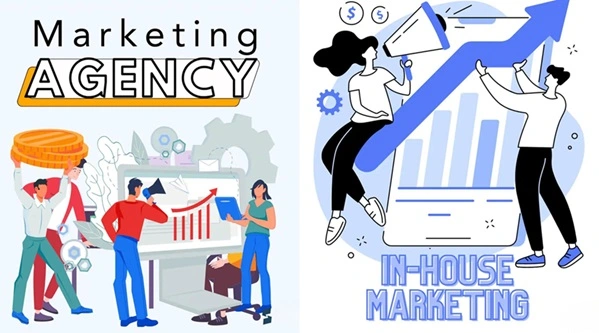
In today’s competitive digital landscape, providing a quality user experience is crucial for your online business to thrive. But how do you ensure you’re giving your customers what they want? The answer lies in A/B testing, a powerful tool that helps you make data-backed decisions to drive conversions and revenue. As a marketer, you know that relying on intuition or guesswork won’t cut it. By following the right steps, you can conduct A/B testing that yields tangible insights, improves your website, and ultimately grows your business. In this article, we’ll walk you through the crucial steps to conduct A/B testing for your online business, so you can start making informed decisions and winning over your customers.
What is A/B Testing?
The concept of A/B testing, also known as split testing, is a crucial aspect of conversion optimization that allows you to make data-driven decisions to improve your online business.
Definition
For your online business, A/B testing is an experimentation process where two versions of a webpage, email, or application are shown to different groups of visitors simultaneously. The purpose is to determine which version leaves a favorable impact and drives revenues. Then, you implement the ‘champion’ version to optimize your website for higher returns.
‘A’ refers to ‘control’, and ‘B’ refers to ‘variation’. A/B Testing helps to identify and resolve your customers’ pain points, achieve higher conversion rates, reduce bounce rate, mitigate risks due to modifications, and make overall improvements to your website. Simply put, the A/B test eradicates any guesswork so you can make data-backed decisions.
Purpose
With A/B testing, you can remove any friction in the shopping journey to increase conversions. By comparing two versions of a webpage, email, or application, you can learn what information is most important to your customers and optimize your product pages accordingly.
For example, imagine you’re an online retailer selling men’s wedding suits. You might use A/B testing to compare two versions of your product page: one with a simple product description and another with a more detailed description that includes customer testimonials and size guides. By tracking which version leads to more sales, you can learn what information is most important to your customers and optimize your product pages accordingly.
Another benefit of A/B testing is that it helps you understand your customers’ behavior and preferences, allowing you to tailor your marketing strategies to meet their needs.
Benefits
Any online business can benefit from A/B testing, as it provides a scientific approach to understanding customer behavior and preferences. By testing different versions of a webpage, email, or application, you can identify areas for improvement and optimize your website for higher conversions.
It’s vital to note that A/B testing is not a one-time process, but rather an ongoing cycle of testing, analysis, and optimization. By continuously testing and refining your website, you can ensure that it remains optimized for maximum conversions and revenue.
Additionally, A/B testing can help you increase leads, improve customer engagement, and enhance your brand’s overall user experience. By providing a seamless and intuitive experience, you can build trust and loyalty with your customers, ultimately driving business growth.
At Mister Nguyen Agency, we specialize in helping businesses like yours optimize their online presence through A/B testing and other conversion optimization strategies. Contact us today to learn more about how we can help you improve your website’s performance and drive more conversions.
What Can You Test?
Even with a solid understanding of A/B testing, it’s imperative to know what elements to test on your website to maximize conversions. The possibilities are endless, but here are some common areas to focus on:
Homepage
Test the layout, content, and design of your homepage to see what resonates with your customers. For instance, you could test the placement and design of your call-to-action (CTA) buttons, such as “Shop Now” or “Learn More.” You might also experiment with different hero images, headlines, or introductory text to see what grabs visitors’ attention.
Try testing different navigation menus, search bars, or social media links to optimize the user experience. The goal is to create a homepage that effectively communicates your brand’s value proposition and encourages visitors to take the next step.
Landing Page
On your landing page, test various elements such as headlines, subheadlines, images, videos, or forms to see what drives conversions. You might experiment with different layouts, CTAs, or social proof elements like customer testimonials or trust badges.
Page layout and design play a crucial role in converting visitors into customers. Test different layouts, such as single-column or multi-column designs, to see what works best for your business.
Highlights
With highlights, you can test how you present key information to your customers. For example, you could test different formats for showcasing features, benefits, or product specifications. Try experimenting with different icon sets, colors, or typography to see what stands out.
Highlights are imperative for communicating your product’s or service’s value proposition. By testing different highlight styles, you can determine what resonates with your target audience and optimize your messaging accordingly.
Pages Layouts
The layout of your pages can significantly impact user experience and conversions. Test different layouts for your product, service, or about pages to see what works best. You might experiment with different grid systems, card-based designs, or accordion-style content.
The key is to create a layout that effectively communicates your message and guides visitors through the sales funnel. By testing different page layouts, you can identify what works best for your business and optimize accordingly.
Checkout Page
To reduce cart abandonment rates, test different elements on your checkout page, such as the layout, CTAs, or payment options. You might experiment with different trust badges, security seals, or progress indicators to see what instills confidence in your customers.
Another crucial aspect to test is the checkout process itself. Try experimenting with different payment gateways, shipping options, or coupon codes to see what streamlines the checkout process and reduces friction.
Images
Page images can significantly impact user experience and conversions. Test different image styles, sizes, or formats to see what resonates with your target audience. You might experiment with different product images, hero images, or background images to see what works best.
A/B testing images can help you determine what visual elements drive engagement and conversions. By testing different image styles, you can optimize your visual content and create a more compelling user experience.
Products/Services Descriptions
For your products or services, test different description styles, lengths, or formats to see what effectively communicates value to your customers. You might experiment with different tone, language, or formatting to see what resonates with your target audience.
Pages with well-crafted product or service descriptions can significantly impact conversions. By testing different description styles, you can determine what effectively communicates your value proposition and optimize accordingly.
CTAs
Test different CTAs, such as “Buy Now,” “Sign Up,” or “Learn More,” to see what drives conversions. You might experiment with different CTA styles, sizes, or colors to see what stands out.
Images with CTAs can also be tested to see what drives engagement and conversions. By testing different CTAs, you can determine what effectively encourages visitors to take the next step and optimize your calls-to-action accordingly.
Keep in mind, the key to successful A/B testing is to focus on one variable at a time and measure the results. By testing different elements on your website, you can identify what drives conversions and optimize your user experience to increase leads and sales for your business.
Forms
Not every form on your website is created equal. Some forms might be converting better than others, and it’s crucial to identify which ones are performing well and which ones need improvement. A/B testing can help you optimize your forms to increase conversions and reduce friction in the user experience.
Delivery Types
Any form that involves delivery or shipping options can be optimized through A/B testing. For instance, you can test different delivery options, such as free shipping, expedited shipping, or in-store pickup, to see which one resonates with your customers the most.
Here’s a breakdown of different delivery types you can test:
| Delivery Type | Description |
|---|---|
| Free Shipping | Offer free shipping on all orders or on orders above a certain amount |
| Expedited Shipping | Offer expedited shipping options, such as 2-day or 3-day shipping |
| In-Store Pickup | Allow customers to pick up their orders in-store |
| Same-Day Delivery | Offer same-day delivery options for customers in specific areas |
| Standard Shipping | Offer standard shipping options with estimated delivery times |
Knowing which delivery type resonates with your customers can help you optimize your shipping options and increase conversions.
Payment Method Options
On your website, you may have multiple payment method options, such as credit cards, PayPal, or Apple Pay. A/B testing can help you determine which payment method options are preferred by your customers.
For instance, you can test the placement of payment method options, such as placing the most popular payment method at the top of the list or highlighting a specific payment method, like Apple Pay, to see if it increases conversions.
Another way to optimize payment method options is to test the language used to describe each option. For example, you can test using “Secure Payment” instead of “Credit Card” to see if it increases trust and conversions.
By optimizing payment method options, you can reduce friction in the checkout process and increase conversions.
Pop-ups
Payment pop-ups can be an effective way to encourage customers to complete their purchase. However, it’s crucial to test different pop-up designs and messaging to see which one resonates with your customers the most.
For instance, you can test different pop-up triggers, such as when a customer abandons their cart or when they’re about to leave the website. You can also test different messaging, such as offering a discount or highlighting the benefits of completing the purchase.
To optimize pop-ups, you can test different design elements, such as the color scheme, font size, and call-to-action (CTA) buttons. By testing different pop-up designs and messaging, you can increase conversions and reduce cart abandonment.
Push Notifications
For businesses with mobile apps, push notifications can be an effective way to re-engage customers and encourage them to complete their purchase. A/B testing can help you optimize push notifications to increase conversions.
For instance, you can test different notification triggers, such as when a customer abandons their cart or when they’re near a physical store location. You can also test different messaging, such as offering a discount or highlighting the benefits of completing the purchase.
Delivery timing is also crucial when it comes to push notifications. You can test sending notifications at different times of the day or week to see when customers are most responsive.
Social Media Posts
On social media, you can test different post types, such as images, videos, or carousels, to see which one resonates with your audience the most. You can also test different messaging, such as highlighting the benefits of a product or showcasing customer testimonials.
For instance, you can test posting at different times of the day or week to see when your audience is most engaged. You can also test using different hashtags or tagging other accounts to increase reach and engagement.
Notifications on social media can also be optimized through A/B testing. You can test different notification types, such as in-app notifications or email notifications, to see which one increases engagement and conversions the most.
Social Proof
Forms of social proof, such as customer reviews and testimonials, can be optimized through A/B testing. You can test different placement options, such as placing reviews above the fold or highlighting them in a pop-up.
Push social proof to the forefront of your website by testing different design elements, such as the color scheme, font size, and imagery. By optimizing social proof, you can increase trust and conversions.
By following these steps, you can optimize your forms and increase conversions on your website. Remember to always test one variable at a time and analyze the results to make data-backed decisions.
Know Your Website’s Current Standing

For any A/B testing to be successful, you need to have a solid understanding of your website’s current standing. This involves analyzing your website’s traffic patterns, identifying areas that need improvement, and understanding your customers’ behavior.
Using Conversion Rate Optimization (CRO) Tools
To gain valuable insights into your website’s performance, you can utilize Conversion Rate Optimization (CRO) tools. These tools help you understand your website’s traffic patterns, identify pages that attract the most traffic, and analyze user behavior. Google Analytics is a free web analytic tool that provides you with this information. Additionally, you can test how responsive your website is under different scenarios to understand its resilience capability.
User behavioral tools with heatmaps give you a visualization of your users’ experience with your website. Then you can zoom in on the problem areas faster; your A/B test needs to focus on these areas. These tools usually provide reporting and analysis to help you diagnose the problems.
Understanding Traffic Patterns
Rate your website’s performance by analyzing traffic patterns. Identify the pages that attract the most traffic, and understand how users interact with your website. This information will help you identify areas that need improvement and create targeted A/B tests to optimize those areas.
Your website’s traffic patterns can reveal valuable insights into your customers’ behavior. By analyzing this data, you can identify pain points, bottlenecks, and areas of improvement. This information will help you create targeted A/B tests that address specific issues and improve your website’s overall performance.
Identifying Problem Areas
An vital step in A/B testing is identifying problem areas on your website. Analyze your website’s traffic patterns, user behavior, and conversion rates to identify areas that need improvement. This could be anything from a slow-loading page to a confusing checkout process.
With the help of CRO tools, you can uncover gaps in your users’ journey and identify areas that need improvement. This information will help you create targeted A/B tests that address specific issues and improve your website’s overall performance.
With a clear understanding of your website’s current standing, you can create targeted A/B tests that address specific issues and improve your website’s overall performance. By identifying problem areas and understanding your customers’ behavior, you can create a better user experience and increase conversions.
Know Your A/B Testing Objective
Many marketers explore A/B testing without a clear understanding of what they want to achieve. This is a recipe for disaster, as it can lead to confusing results and a waste of resources. Before designing your A/B test, you must know the reason you’re doing it in the first place.
Setting Clear Goals
On the surface, it may seem obvious, but setting clear goals is crucial to the success of your A/B testing. You need to define what you want to achieve with your test. Are you looking to increase conversions, reduce bounce rates, or improve user engagement? Be specific and ensure your goals are measurable, achievable, relevant, and time-bound (SMART).
Having clear goals will help you focus on the variables that matter most and ensure your test is designed to achieve those goals. This will also help you avoid testing unnecessary variables, which can lead to confusing results and wasted resources.
Avoiding Confusion
To avoid confusion, you need to ensure your goals are specific and well-defined. This will help you stay focused on what you want to achieve and avoid testing multiple variables at once. Testing multiple variables can lead to confusing results, making it difficult to determine which variable is responsible for the outcome.
Avoiding confusion is critical to the success of your A/B testing. When you have clear goals, you can design a test that is focused on achieving those goals, and you can avoid testing unnecessary variables.
For instance, if you’re looking to increase conversions on your website, you may want to test different calls-to-action (CTAs) or button colors. However, if you test multiple variables at once, such as CTAs, button colors, and font sizes, you may end up with confusing results. By focusing on one variable at a time, you can determine which variable is responsible for the outcome and make data-backed decisions.
Focusing on Effective Results
One of the primary objectives of A/B testing is to achieve effective results. You want to ensure that your test is designed to achieve a specific goal, and you want to measure the outcome accurately. To do this, you need to focus on the variables that matter most and avoid testing unnecessary variables.
Focusing on effective results requires a clear understanding of your goals and objectives. You need to define what you want to achieve and design a test that is focused on achieving those goals. This will help you avoid testing unnecessary variables and ensure your test is designed to achieve effective results.
With a clear understanding of your goals and objectives, you can design a test that is focused on achieving effective results. You can measure the outcome accurately and make data-backed decisions to improve your website or business.
Identify the Variables
Once again, it’s crucial to identify the variables that will help you achieve your A/B testing objectives. You cannot test everything at once, so you need to isolate the independent variable you wish to measure (the control) and locate the dependent variable that changes when measured against the independent variable.
Isolating Independent Variables
One of the most critical steps in A/B testing is isolating the independent variable. This variable is the one you intentionally change to measure its impact on your website or business. For instance, if you want to test the effect of a green-colored CTA button on your email campaign, the independent variable is the email with the green-colored CTA button.
In other words, the independent variable is the variable you manipulate or change to observe its effect on the dependent variable. By isolating the independent variable, you can accurately measure its impact and make data-backed decisions.
Locating Dependent Variables
One of the primary goals of A/B testing is to measure the impact of the independent variable on the dependent variable. The dependent variable is the variable that changes in response to the independent variable. In the previous example, the dependent variable is the email with the red-colored CTA button you have been using.
In essence, the dependent variable is the outcome or response you’re trying to measure or improve. By locating the dependent variable, you can determine how it responds to the changes made to the independent variable.
Another crucial aspect of locating dependent variables is understanding how they relate to your business goals. For instance, if you’re an e-commerce website, your dependent variable might be the conversion rate, average order value, or customer satisfaction.
Creating Variations
One of the most exciting parts of A/B testing is creating variations of your independent variable. This involves creating different versions of your website, email, or landing page that differ only in the independent variable you’re testing.
For instance, if you’re testing the effect of a green-colored CTA button, you might create two variations: one with a green-colored CTA button and another with a red-colored CTA button. By creating these variations, you can test which one performs better and drives more conversions.
For instance, if you’re a fashion brand, you might create two variations of your product page: one with a simple product description and another with a detailed product description that includes customer testimonials and size guides. By testing these variations, you can determine which one resonates more with your customers and drives more sales.
Create Control Scenarios
All successful A/B testing begins with creating control scenarios that ensure accurate results. This is where you set the stage for your test, eliminating any external factors that could influence the outcome.
Ensuring Accurate Results
Control scenarios are necessary in A/B testing because they help you isolate the variable you’re testing. By creating a controlled environment, you can confidently attribute any changes in behavior or performance to the variable being tested, rather than external factors. For instance, if you’re testing the impact of a green-colored CTA button versus a red-colored one, your control scenario would involve sending the same email with the red-colored CTA button to one half of your customer segment and the same email with the green-colored CTA button to the other half.
This controlled environment ensures that any differences in behavior or performance can be attributed to the color of the CTA button, rather than other factors such as the time of day, day of the week, or demographics of the customer segment.
Controlling External Factors
Controlling external factors is crucial in A/B testing to prevent them from influencing the test results. These external factors can include:
- Time of day or day of the week
- Seasonal fluctuations
- Holidays or special events
- Weather or natural disasters
- Changes in website traffic or user behavior
- Any other factors that could impact user behavior or performance
By controlling these external factors, you can ensure that your test results are accurate and reliable, giving you confidence in the decisions you make based on those results.
Plus, controlling external factors allows you to focus on the specific variable being tested, giving you a clearer understanding of its impact on user behavior and performance. This, in turn, enables you to make data-driven decisions that drive real results for your online business.
Validating Concepts
Validating concepts is a necessary step in the A/B testing process. It involves testing your ideas and hypotheses to ensure they’re effective and worthwhile. By validating your concepts, you can:
Accurate validation of concepts helps you identify which ideas are worth pursuing and which ones need refinement or abandonment. This saves you time, resources, and effort, allowing you to focus on the ideas that drive real results for your online business.
Another benefit of validating concepts is that it helps you refine your ideas and iterate on them. By testing and refining your concepts, you can create more effective and targeted solutions that meet the needs of your customers and drive conversions.
- Identify which ideas are worth pursuing and which ones need refinement or abandonment
- Refine and iterate on your ideas to create more effective and targeted solutions
- Save time, resources, and effort by focusing on ideas that drive real results
- Any other benefits that come with validating concepts in A/B testing
Bear in mind, creating control scenarios, controlling external factors, and validating concepts are crucial steps in the A/B testing process. By following these steps, you can ensure accurate results, drive real conversions, and grow your online business.
Determine the Group Size
To ensure the accuracy of your A/B testing results, it’s crucial to determine the right group size for your test. This step is often overlooked, but it’s imperative to get it right to achieve conclusive results.
Splitting Groups Equally and Randomly
One of the most critical aspects of determining the group size is splitting your testing groups equally and randomly. This ensures that both groups have similar characteristics, reducing any biases that may influence the test results. For instance, if you’re testing two versions of a landing page, you want to make sure that both groups have an equal number of visitors with similar demographics, interests, and behaviors.
Splitting groups equally and randomly also helps to minimize external factors that may impact the test results. By controlling the group size and composition, you can isolate the variable being tested and ensure that any differences in the results are due to the variation being tested, rather than external factors.
Controlling Group Size
One of the key considerations when determining the group size is controlling the number of participants in each group. Generally speaking, the larger the group, the better. This is because a larger group size provides more accurate results and increases the confidence level of the test. However, it’s also important to consider the desired outcome of the test, as well as other factors such as the complexity of the test, the number of variations, and the available resources.
Controlling group size is especially important when testing multiple variations simultaneously. In such cases, you want to ensure that each variation has a sufficient number of participants to provide reliable results. A good rule of thumb is to aim for a minimum of 1,000 participants per variation, although this may vary depending on the specific test and desired outcome.
Controlling group size also involves considering the sampling rate, which is the percentage of visitors who participate in the test. A higher sampling rate can provide more accurate results, but it may also increase the risk of disrupting the user experience. A good balance between sampling rate and group size is imperative to achieve reliable results while minimizing any negative impact on the user experience.
Achieving Conclusive Results
Achieving conclusive results is the ultimate goal of A/B testing. To achieve this, you need to determine the right group size that provides statistically significant results. This involves calculating the sample size required to detect a certain effect size, which is the minimum difference between the control and variation groups that you want to detect.
Achieving conclusive results also involves considering the test duration, which is the length of time the test runs. A longer test duration can provide more accurate results, but it may also increase the risk of external factors influencing the test results. A good balance between test duration and group size is imperative to achieve reliable results.
Splitting your testing groups equally and randomly, controlling the group size, and achieving conclusive results are all critical steps in determining the right group size for your A/B test. By following these steps, you can ensure that your test results are accurate, reliable, and actionable, providing valuable insights to optimize your website and improve the user experience for your customers.
Determine the Right A/B Testing Tool

Your A/B testing journey is incomplete without the right tool to support your experiments. With numerous options available, selecting the perfect tool can be overwhelming. However, don’t worry; we’ve got you covered.
Choosing the Right Tool
An ideal A/B testing tool should be able to help you create and manage experiments, track results, and provide actionable insights. Some popular options include VWO, Optimizely, and Un bounce. When choosing a tool, consider factors such as ease of use, integration with your website, and the level of customization it offers.
Moreover, consider the type of tests you want to run. If you’re looking to test email campaigns, you might need a tool that specializes in email A/B testing. On the other hand, if you want to test website elements, a tool like Crazy Egg or Hotjar might be more suitable.
Setting Goals and Variants
Tool selection is just the beginning. Once you have your tool, it’s time to set clear goals and variants for your experiment. What do you want to achieve with your A/B test? Is it to increase conversions, reduce bounce rates, or improve user engagement? Define your goals and ensure they’re measurable.
Next, create variants that align with your goals. These can be changes to your website’s layout, CTAs, images, or even the copy. Make sure your variants are significantly different from the original to ensure meaningful results.
Testing different variations of your website or application is crucial to understanding what resonates with your customers. By setting clear goals and creating meaningful variants, you’ll be able to gather actionable insights that drive real results for your business.
Harvesting Results
Choosing the right tool and setting clear goals are crucial, but they’re only half the battle. Once your test is running, it’s vital to harvest the results and analyze them correctly.
Look for tools that provide detailed analytics and reporting features. These will help you understand how your variants are performing and identify areas for improvement. Don’t be afraid to dig deeper into your results, and don’t just focus on the winning variant.
Variants that didn’t perform well can still provide valuable insights into what doesn’t work for your customers. Use this information to refine your approach and create even better experiments in the future.
Decide Test Approach and Run the Test
Unlike other aspects of A/B testing, deciding on the test approach and running the test requires careful consideration of several factors. This is where you put your plan into action, and the success of your test hinges on making the right decisions.
Determining Test Duration
On average, A/B tests can run anywhere from a few days to several weeks or even months. The key is to determine the ideal test duration based on your website’s traffic, conversion rates, and other factors. A longer test duration may provide more accurate results, but it may also delay the implementation of changes.
For example, if your website receives a high volume of traffic, you may want to run the test for a shorter period to ensure that the results are statistically significant. On the other hand, if your website has a lower volume of traffic, you may need to run the test for a longer period to achieve the same level of significance.
Computing Test Timing
Test timing is critical to the success of your A/B test. You want to ensure that the test runs during a period when your website is experiencing normal traffic patterns and is not affected by external factors such as holidays, promotions, or maintenance downtime.
For instance, if you’re an e-commerce website, you may want to avoid running the test during peak holiday seasons or special promotions, as these can skew the results. Instead, choose a period when your website is experiencing normal traffic patterns, and you can get a more accurate picture of how your customers behave.
Plus, it’s imperative to consider the timing of your test in relation to your business goals. If you’re looking to increase conversions during a specific period, such as a holiday season, you may want to run the test during that time to maximize the impact of your changes.
Running the Test Concurrently
To ensure accurate results, it’s imperative to run both variations of your test concurrently. This means that half of your website visitors will see the control version, while the other half will see the variation. By running the test concurrently, you can eliminate any external factors that may influence the results.
For example, if you’re testing two different CTAs on your homepage, you’ll want to run both versions simultaneously to ensure that any differences in performance are due to the CTAs themselves, rather than external factors such as changes in website traffic or user behavior.
The key is to ensure that both variations are identical, except for the element being tested. This will help you isolate the impact of the element on your website’s performance and make data-driven decisions.
The Mister Nguyen Agency, a leading digital marketing agency, can help you design and execute A/B tests that drive real results for your online business. With our expertise in conversion optimization and user experience design, we can help you create a website that resonates with your customers and drives conversions.
Analyze Results and Effect Changes
Keep in mind that analyzing results is a crucial step in A/B testing. It’s where you get to see the fruits of your labor and make data-backed decisions to improve your website and business.
As suggests in their article, How to Do A/B Testing: 15 Steps for the Perfect Split Test, analyzing results is where you separate the winners from the losers. It’s crucial to approach this step with an open mind, focusing on the primary goal metrics that drive your business forward.
Analyzing Results with an Open Mind
Analyze the results of your A/B test with a clear and unbiased mindset. Avoid making assumptions or jumping to conclusions based on personal preferences. Instead, focus on the data and let it guide your decisions.
Do not forget, A/B testing is a scientific process, and the results should be treated as such. Be prepared to accept the outcome, even if it doesn’t align with your initial expectations. By doing so, you’ll be able to make informed decisions that drive real results for your business.
Focusing on Primary Goal Metrics
Primary goal metrics are the key performance indicators (KPIs) that drive your business forward. These metrics can include conversion rates, lead generation, sales, or any other metric that’s crucial to your online business.
When analyzing results, focus on these primary goal metrics to determine which variation performs better. By doing so, you’ll be able to make data-backed decisions that improve your website’s overall performance and drive more conversions.
Open yourself up to the possibility that your initial hypothesis might be wrong. Be willing to learn from the results and adjust your strategy accordingly. This mindset will help you refine your approach and create a better user experience for your customers.
Implementing Corrective Measures
Results-driven analysis is crucial in A/B testing. Once you’ve identified the winning variation, it’s time to implement corrective measures to ensure that the changes are effective and sustainable.
Results from your A/B test should be used to inform future design and development decisions. By doing so, you’ll be able to create a more cohesive and effective user experience that drives real results for your business.
For instance, if your A/B test reveals that a particular CTA button color increases conversions, you can apply this knowledge to future design decisions, ensuring that your website is optimized for maximum conversions.
By following these steps, you’ll be able to analyze results effectively, make data-backed decisions, and drive real growth for your online business. Remember to stay focused on your primary goal metrics, and don’t be afraid to adapt and learn from the results.
Conclusion
So, now that you’ve learned the important steps to conduct A/B testing for your online business, it’s time to put them into action. Keep in mind, A/B testing is not a one-time task, but an ongoing process to continually improve your website and provide the best possible user experience for your customers. By following these steps, you’ll be able to make data-backed decisions that drive real results for your business, such as higher conversion rates, reduced bounce rates, and increased leads.
At Mister Nguyen Agency, we understand the importance of A/B testing in today’s competitive digital landscape. That’s why we offer expert services in conversion optimization, social media, and design branding to help businesses like yours thrive online. By leveraging our expertise and following the steps outlined in this article, you’ll be well on your way to creating a website that truly resonates with your target audience and drives business growth. So, what are you waiting for? Start A/B testing today and watch your online business flourish!











